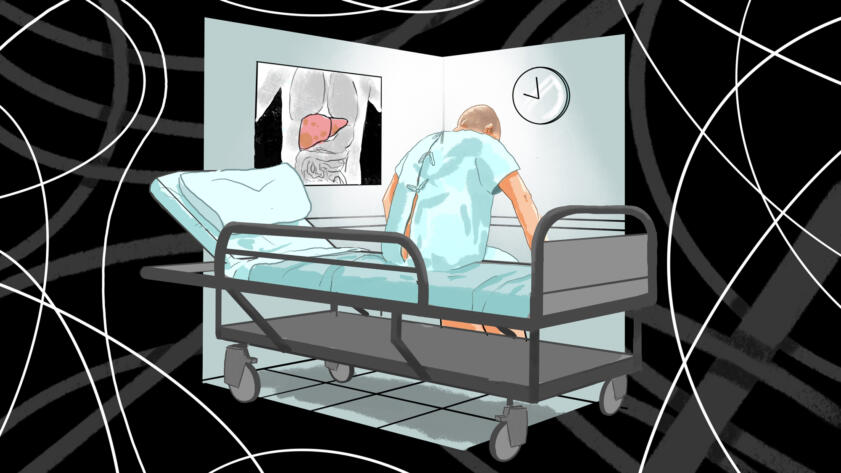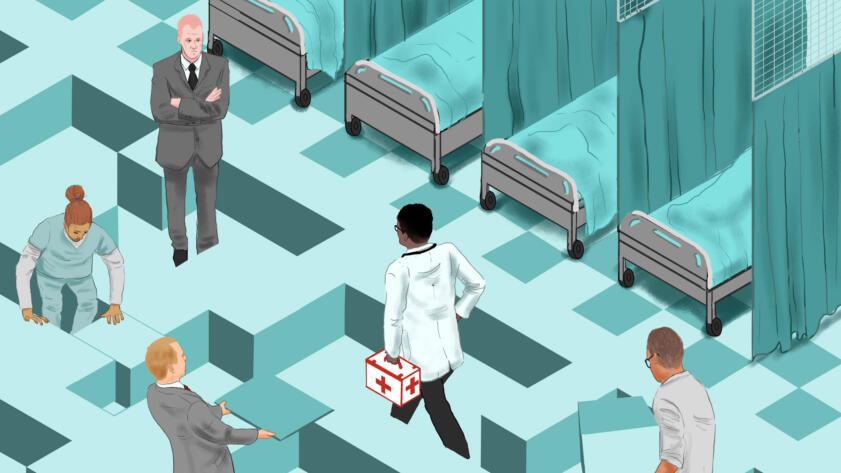Subscribe to Hello World
Hello World is a weekly newsletter—delivered every Saturday morning—that goes deep into our original reporting and the questions we put to big thinkers in the field. Browse the archive here.
Hello,
I’m Malena Carollo, and I’m an investigative reporter here at The Markup. I write stories about broken systems that deeply affect people’s lives. In March, we published a two-part investigation into the algorithm that determines who gets a life-saving liver transplant.

Organ Failure
Poorer States Suffer Under New Organ Donation Rules, As Livers Go to Waste
Life-saving liver transplants have plummeted in some Southern and Midwestern states with higher death rates from liver disease, while New York and California have made big gains
The algorithm was changed three years ago to allow donated livers to travel farther than ever before. Proponents said the change was meant to get the sickest patients a liver no matter where they lived. But those making the new policy dismissed surgeons, advocates, and academics around the country who worried that it would hurt rural areas and the poor while causing more livers to be wasted.
My reporting partner Ben Tanen and I found these concerns were valid: the change entrenched long-standing inequities, taking livers away from areas that already struggle with access to health care and sending them to some states that do a poor job of collecting donated organs locally.
We also found that the change didn’t happen organically: it was engineered by those whose states would benefit from it.
Since our story was published, the U.S. Department of Health and Human Services (HHS) said it would break up the contract that has given one contractor a nearly four-decade hold on the transplant system. And as of this week, Congress is now considering two reform bills to advance this effort.
Here’s what you need to know:
1. The policy produced clear winners and losers
Seven states and Puerto Rico lost transplants under the policy. All but one of these losing states were in the South and Midwest. Two—Alabama and Kansas—each have just one hospital within their borders where adults can get a liver transplant. Alabama saw a 44 percent drop in transplants under the policy, while Kansas dropped by 38 percent. The number of losing states is even larger when you look at how many transplants each did compared to how many organs were donated there: 19 states and Puerto Rico saw a decline in transplants as a percentage of donations.
Those behind the change said their goal was to save more lives, not to create disparities. But the negatively affected states have lower rates of insured people, fewer transplant hospitals per square mile, and lower median household incomes than those that benefited from the change. The top beneficiary of the shift? New York, which has one of the lowest rates of end-stage liver disease in the country. California also significantly benefited from the change.
2. One in 10 donated livers were discarded during the policy
A transplant is the only treatment option for end-stage liver disease; there is no dialysis for livers.
In 2021, the policy change coincided with the highest number of livers discarded in nearly a decade—949. Experts said increased travel time contributed to this. When a donated liver gets matched to someone waiting for a transplant, the recipient’s surgeon may still reject it—maybe there was an unforeseen issue, or perhaps they got a better liver from elsewhere. The rejected liver would go to the next matching patient. But because of how widely livers are now shared, the next person may be quite far away, requiring more travel. And while the liver is traveling, it is also deteriorating: they can only be outside the body for about 12 hours.
The issue of discarded organs is particularly important when it comes to livers because a transplant is the only treatment option for end-stage liver disease; there is no dialysis for livers.
3. Nonprofits in charge of the nation’s organ supply are failing—and so are their regulators
Battles over who gets a donated liver are a symptom of a much larger problem: there aren’t enough organs to go around. The federal government contracts 56 nonprofits to convince families to donate their dying loved ones’ organs. They are overwhelmingly underperforming at their jobs: 42 percent of all “organ procurement organizations” were in the lowest performance tier in the annual rankings released earlier this month.
What those rankings don’t capture are the vast differences in how these organizations perform their crucial work. No regulator looks at how they do their jobs, despite two of the regulators collecting data that would allow them to do so. The significant differences in how each organization performs their duties directly affect how many organs are recovered.
4. Private interests orchestrated the nationwide change
The differences in how organ procurement organizations operate contributed to the liver policy change. A lawsuit from six patients in New York, California, and Massachusetts demanded that livers be shared more broadly, and insiders overseeing the nation’s transplant system used this lawsuit to push forth the policy change after other pressure tactics didn’t work.
We found that two of the worst-performing organ procurement organizations in the country and a New York hospital trade association formed a lobbying group that recruited the patients who filed the lawsuit, while the trade group bankrolled it. Hospitals in New York were long frustrated with their local organ procurement organization’s performance. The new policy brought many more livers to their areas without having to collect more locally. The New York organ procurement organization, LiveOnNY, was so poor at its job that its federal contract was nearly pulled twice. You can read the audit The Markup obtained outlining LiveOnNY’s widespread deficiencies here. And here’s how those groups and insiders forced the policy change.
5. The federal government wants the national transplant system to change
At the helm of the country’s transplant system is the United Network for Organ Sharing (UNOS). It and the organ procurement organizations are the subject of multiple congressional investigations into their performance. The day after we published our investigation, HHS announced a plan to break up UNOS’ longstanding hold on the transplant system, slicing off different portions of the work into separate contracts. Two bills, one in the House and one in the Senate, have since been filed that would give HHS the support to do so.
There are scant details available about how exactly the contract would actually be broken up, however. And even if policymaking work were taken from UNOS, there is no guarantee that the liver policy would be revised.
Thanks for reading our work, and always feel free to reach me with tips or feedback at malena@themarkup.org or 813-591-0688.
Best,
Malena Carollo
Investigative Reporter
The Markup
P.S. Markup reporters Aaron Sankin and Leon Yin recently published a guide to investigating the digital divide. If you’d like to learn how to use it, join them for a demo this Tuesday, May 23, at 2:00 p.m. ET. Just sign up at mrkup.org/byod-rsvp.




